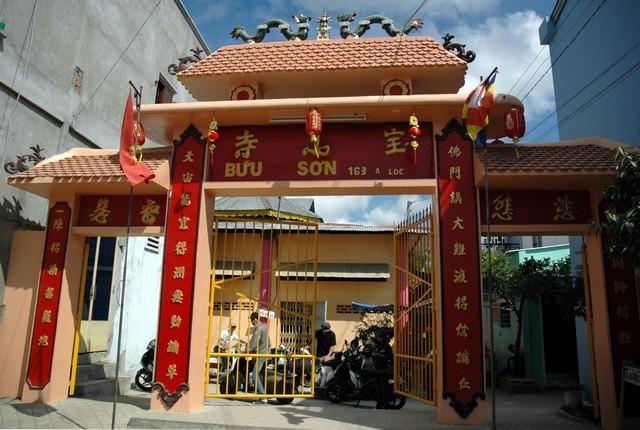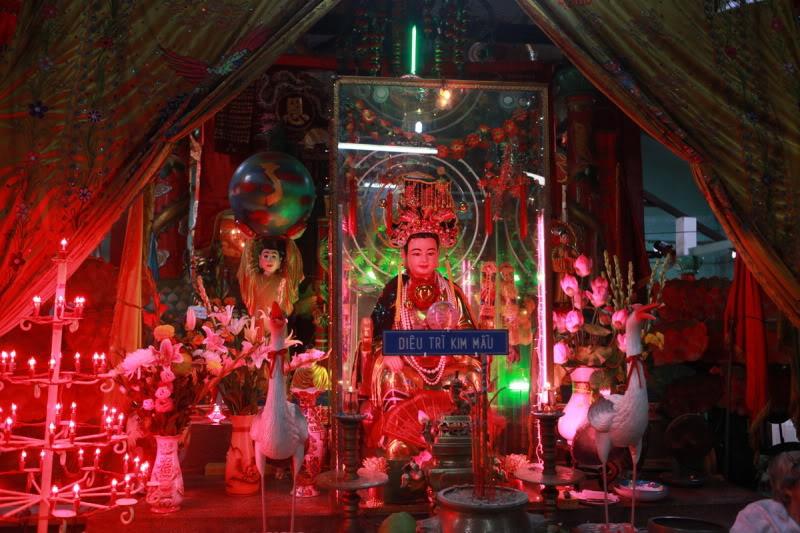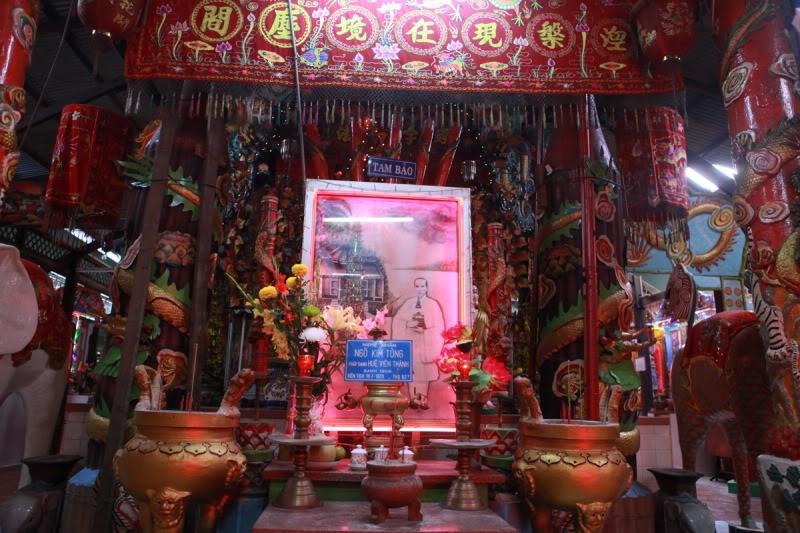In 1929, Mr. Kim Tong Ngo, the forth abbot of the pagoda, after he was strongly illness, dreamed of Buddha. Buddha suggested him to rebuild the pagoda therefore he determined to renovate the pagoda by using clay to mould the worshipping statues, mascots rather than bronze casting or engraving wood.

Clay Pagoda is truly called Buu Son Pagoda. The pagoda was established by the Ngo family over two hundred years ago for their at-home mediation therefore it's no bonze and doesn’t get cash from visitors. At present, members of the Ngo family managed the pagoda.
In 1929, Mr. Kim Tong Ngo, the forth abbot of the pagoda, after he was strongly illness, dreamed of Buddha. Buddha suggested him to rebuild the pagoda therefore he determined to renovate the pagoda by using clay to mould the worshipping statues, mascots rather than bronze casting or
engraving wood.

Firstly, he collected clay then dry it. When drying, he placed clay within the mortar, creating it well-kneaded; filtered to depart all sand and impurities; and then used his imagination to create different-shaped statues. All finished products formed from clay were covered by paint and polish for them to give the impression of being created from wood.
With 1991 massive and little statues within the pagoda were engraved, subtly molded by him in totally 42 years. When finishing building pagoda and decorating statues, mascots, he suffered from a powerful illness and died at the age of sixty two.
Thousands of worshipping stuff, the most special and strange one is 13-floor Da Bao Tower as it's made of clay without skew. Beside Da Bao Tower, there's main visiting Buddha tower. Main tower includes a lotus which comprises 1.000 petals in the middle and 1.000 small statues of Buddha.

Contemplating the tower and lotus, most of tourists assume that those are works of skilled sculptor rather than someone like Mr. Tong who has simply
finished the third category in the village school. Although he didn’t know anyhing related to art, he created several statues, mascots with extraordinarily complicated shapes and patterns.
In the last years of life, Mr. Tong stopped creating statues to forge the candles that are located within the main halls of the pagoda. To cast the candles as aimed, he visited Sai Gon to shop for white wax (“bạch lạp”_ a form of pure wax), cut it into smaller components, heat them to melt purpose then pour them within the pattern.
In estimation, the candles had terribly massive size therefore he couldn’t notice the acceptable patterns. When several time thinking, he determined to use corrugated iron, rolling it to create the pattern. To successfully complete a candle, Mr. Tong had to work hard as the key for keeping the candle continuously burn while not being off was that when pouring wax into the pattern, he didn’t let the wax have horizontal defects. In order to perform this, he had to pour wax frequently each night and day throughout a month. After a month, when the wax was cool, it absolutely was taken out of the pattern. It took him many continuous months to create six massive candles that every was 200kg serious and 2 smaller ones that weighed 100kg every.
2 smaller candles have been burnt since the day Mr.Tong died, up to now, thirty-nine years have passed. There's a weird factor that in thirty-nine years, 2
candles haven't been off despites of any effects. After 2 smaller candles are off, a handful of massive candles are going to be burnt next. It’s estimated that every one can light in approximately seventy years. therefore if burning one candle at a time, it takes over 400 years to burn all.
vietnamtourism.org.vn
Vietnam guide, Vietnam travel guide

 bởi
bởi 






